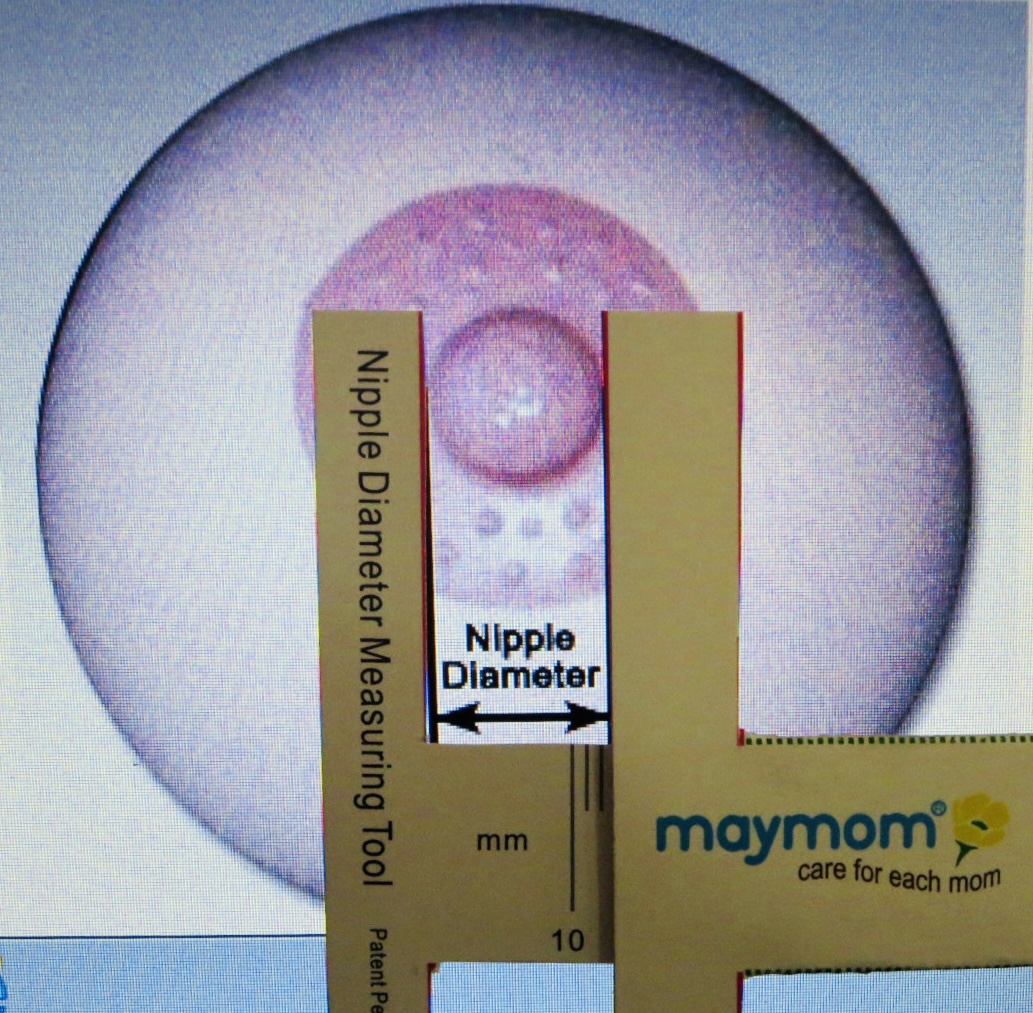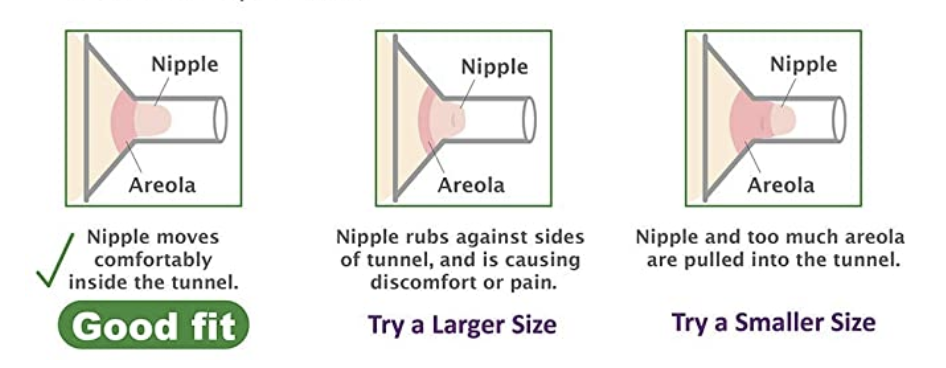Pumping is a big deal
If pumping was as easy as pouring a glass of water from your kitchen tap, formula companies’ market share would shrink big time! However, if you or someone you know ever tried pumping, it appears not that easy task at all. We’ll try to explain how it works and how you can achieve your best results.
Pumping does not show all the breastmilk your body is able to make. Do not pump ‘to see’ how much milk your baby gets. Pumping volumes show how much you can pump and how well (or not) you’re bonded with your pump. Wrong pumping schedule/technique/gear will result in really low pumping volumes. A strong sucking baby with a deep latch will transfer lots of breastmilk in no time!
Disclaimer: this website and its team are not endorsed by, directly affiliated with, maintained, authorized, or sponsored by any breast pump brand or shopping platform. All product and company names are the registered trademarks of their original owners.
1. Start your pumping early postpartum
If your baby is not being latched regularly and efficiently right after being born due to various reasons and you’re conscious, please start your pumping as soon as possible but no later than 6 hours after the delivery. If you already have a pump, it’s a good idea to learn how it works and fits you while you’re still pregnant. Regardless if it’s new in a box or hand-me-down pump, wash it with soap & water, sterilize, and pack in a sealed plastic bag to take with you to the hospital. Make sure all parts and the charger are being packed along.
2. Do it properly and set the right expectations
Exclusive pumping means pumping for 15-20 minutes both breasts at the same time every 3 hours with one 4 hours break at night aiming for 8 times a day until your milk supply is well established. At that point (usually, in your second month postpartum), you can be a bit more relaxed about your pumping and adjust your pumping schedule accordingly.
DO NOT stop regular pumping if, in the beginning, all you get is just a few drops (or even nothing!) of your milk. Your body will come up with a better response if you don’t stop your regular pumping efforts.
If your baby is latching but is not very efficient at the breast and you need to top them up, then short (5-10 minutes) regular pumping after most of the feeds will help to boost your supply and provide your baby with your own breastmilk.
If you need to stick with an exclusive pumping for a while, please consider getting a double electric pump. Single electric pumps are not cheap and they will cost you a double pumping time that is not sustainable in a long run. While manual (hand-powered) pumps are much cheaper, they will not help you to achieve your pumping results – it’s really time-consuming and tiring process if you have to use such a pump for 15 minutes on each side 7-8 times a day. Any Haakaa-like silicone suction cup/bottle is not a pump and will not do the job required.
If your baby is premature and is admitted to the NICU, ask its staff about the hospital grade pump: most NICUs have options to loan you a hospital grade pump to support and improve your milk supply as your situation is very different from those with full-term babies.
3. Size matters
Your pump flanges must fit you properly: too small or too big flanges will hurt your nipples and will decrease your pumping volumes.
Properly fitting flange must be as big as each of your nipples or 1mm bigger if you cannot get the same flange size, i.e. if your nipple is 15mm from edge to edge (the diameter of the nipple) then you’d need 15mm flange, and if your nipple is 14mm then you’d need to try 15mm flange as 14mm flanges are not currently available. Rule of thumb: good fit flange will stretch out your nipple during pumping, your nipple will touch the walls of the tunnel of the flange but still will be able to move in it freely. Too big flange will expand the nipple and it will rub against the wall of the tunnel during the pumping session; too small flange will be a very tight fit for your nipple before and during pumping.
4. Bond with your pump and mimic the baby
Almost all electric pumps have at least 2 modes: fast and slow. Fast mode is to mimic baby’s nibbling that tells your body “I’m hungry and I need milk” thus your body is reacting with the milk letdown reflex and your milk begins to flow/spray/drip into the flanges. At that moment your baby would switch from nibbling to big range swallowing so you must do the same during your pumping session, i.e. change your pumping mode from fast to slow. Depending on the brand and model, it could be a button with an arrow and drops, or you have to increase the speed yourself. During a 15-20 minutes pumping session, you’ll have to switch back and forth between fast and slow modes quite a few times.
5. Use your pump to the max
If your pump allows you to adjust the strength of the suction, please adjust it each time you change the suction speed: go to the maximum comfortable strength without hurting your nipples. Make sure your nipple is in the center of the tunnel and your flange is airtight at your areola. Use your fingers to tuck areola/breast tissue inside the flange where you see the air pocket.
6. Use hands-on pumping
Short breast massage and gentle breast compressions before each pumping session will improve your pumping volumes. You can simply shake your breasts up for a few seconds as you were jumping without a bra – that much and that gently. Hand-on pumping is just a gentle and slow sqeezing of your breasts while you’re pumping. A pumping bra is absolutely a must-have thing! You can buy it or do it yourself using your old sports bra. If your old bra has wires, please remove them.
7. Lubricate your flanges for a better fit
If you lubricate your flanges with a drop of olive oil/coconut oil/lanolin, your breast tissue will fill up and glide inside the flange better, small size/shape imperfections will be less important. Apply a bit of oil inside the cone of the flange, at its narrowing point and one centimeter (half an inch) inside the tunnel. If you want to avoid milk contact with the lubricant, lubricate just a few millimeters inside the tunnel and lean forward a bit when pumping.
8. Optimize your pump cleaning routine
If you have a full-term healthy baby, you can keep your pump parts in a sealed plastic bag or container in the fridge between your pumping sessions and wash and sterilize altogether just once a day. If your baby is preterm and/or unwell, please wash your pump parts with dish soap and water after each use and sterilize them once a day.
If you are pumping for just one feeding ahead or you’re doing short pumping to improve your supply and to have some milk for small top-ups, you can leave your pumped milk on the countertop until the next feed as you’re pumping approximately as often as your baby is being fed. Pour the milk into a separate bottle, leave it on the countertop, and just swirl the bottle before giving it to the baby. Room temperature breastmilk is just fine, no need to warm it up.
9. Breastmilk storage guidelines
If your freshly expressed milk has not been given to the baby yet, it can be stored:
- At room temperature (25°C/77°F or colder) for up to 4 hours
- In the fridge for up to 4 days
- In the freezer for about 6 months
- In the deep chest freezer for about 12 months
10. Do your market research
If you need to buy a breast pump, check at least a few places looking for the best deal like Best Buy, Indigo, Babies R Us, Amazon. The price of the same model can differ a lot if you check a few places. Some great brands are not even marketed in Canada and you’ll find them only elsewhere.
How to fit your pump flanges
Many pump brands come with a regular 24/25 mm flange size and some will come with much bigger (28/30mm) flanges and will offer silicone inserts for a better fit. We know only two “no-name” brands offering a much better flanges size variety than most popular breast pump brands – Maymom and Nenesuppply (ordered on Amazon only). They offer 12-32mm separate flanges compatible with major breast pump brands and 13-19mm inserts compatible with any 24/25mm flanges, as well as 24mm insert compatible with 28mm flanges.
Video credit: Karolina Ochoa, IBCLC

Photo credit: Maymom
NIPPLE RULER
- Download the file and print it out on an A4/letter paper at a 100% scale. Make sure that the line across is 92 mm or 3.62 inches for accuracy. You may want to watch this video tutorial.
- Cut through the red line.
- Bend/fold along the green dots.
- See above a picture of a made ruler and how to use it.
- Alternatively, you may use a caliper.
- Measure the nipple diameter BEFORE the pumping/feeding session. Gently massage the breast and the nipple so it would erect and show its true shape/size.
- Measure EACH nipple, don’t assume they’re the same. Measure each nipple horizontally and vertically as not all nipples are perfectly cylindrical.
- Choose a flange (or “breastshield”) with an internal diameter that is as big as your nipple diameter. If your nipple diameter falls between available flange sizes then you should get 1 size up and 1 size down and then try them both to decide what fits you better.
- Maymom’s 13mm, 15mm, 17mm, and 19mm flanges as easy to order on Amazon. It also makes 10mm and 12mm flanges but they’re not so easy to find and usually cost more than their regular products. If you need 21mm flanges you can get those from Medela on Amazon as their usual pricing is better.
- Properly fitting breast pump flange (before and during pumping) feels like a good pair of comfy running shoes: you feel how they touch your feet but at the same time your feet are not being squished there.
Example: If your nipple diameter is 17mm then you should get a 17mm flange. If your nipple diameter is 14mm then please get 13mm and 15mm flanges and see what fits you the best.

Photo credit: Nenesupply
How to pump with a manual (hand-powered) pump
- Start fast and easy sucking and continue for as long as you see nothing or just a few drops of milk
- Switch to slow and stronger suction as soon as you see the milk flowing/spraying/shooting (this is your letdown)
- Continue doing slow and strong suction until milk is flowing/spraying/dripping
- Stop suction when your milk flow slows down and stops
- Switch to another breast and repeat all steps
If you require urgent help with breastfeeding or pumping:
Call or text @ 416-804-9300

